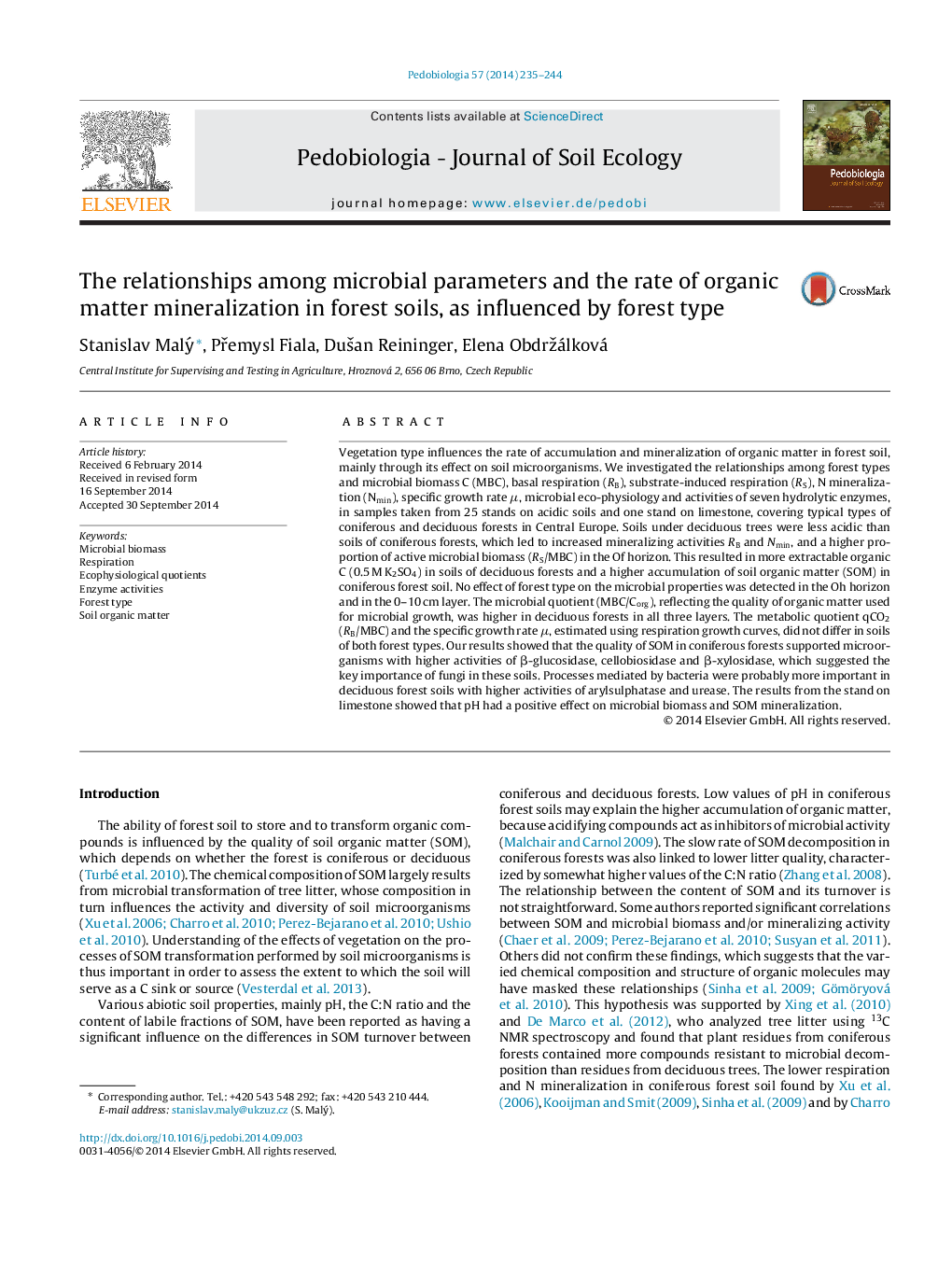| کد مقاله | کد نشریه | سال انتشار | مقاله انگلیسی | نسخه تمام متن |
|---|---|---|---|---|
| 2061043 | 1544027 | 2014 | 10 صفحه PDF | دانلود رایگان |
• Decomposition of SOM was slower under more acidic conditions in coniferous forests.
• The microbial quotient (MBC/Corg) was higher in deciduous forests (Of, Oh, 0–10 cm layer).
• A higher ratio of active microbial biomass was found in the Of of deciduous forests.
• The contribution of fungi to SOM decomposition was higher in coniferous forests.
Vegetation type influences the rate of accumulation and mineralization of organic matter in forest soil, mainly through its effect on soil microorganisms. We investigated the relationships among forest types and microbial biomass C (MBC), basal respiration (RB), substrate-induced respiration (RS), N mineralization (Nmin), specific growth rate μ, microbial eco-physiology and activities of seven hydrolytic enzymes, in samples taken from 25 stands on acidic soils and one stand on limestone, covering typical types of coniferous and deciduous forests in Central Europe. Soils under deciduous trees were less acidic than soils of coniferous forests, which led to increased mineralizing activities RB and Nmin, and a higher proportion of active microbial biomass (RS/MBC) in the Of horizon. This resulted in more extractable organic C (0.5 M K2SO4) in soils of deciduous forests and a higher accumulation of soil organic matter (SOM) in coniferous forest soil. No effect of forest type on the microbial properties was detected in the Oh horizon and in the 0–10 cm layer. The microbial quotient (MBC/Corg), reflecting the quality of organic matter used for microbial growth, was higher in deciduous forests in all three layers. The metabolic quotient qCO2 (RB/MBC) and the specific growth rate μ, estimated using respiration growth curves, did not differ in soils of both forest types. Our results showed that the quality of SOM in coniferous forests supported microorganisms with higher activities of β-glucosidase, cellobiosidase and β-xylosidase, which suggested the key importance of fungi in these soils. Processes mediated by bacteria were probably more important in deciduous forest soils with higher activities of arylsulphatase and urease. The results from the stand on limestone showed that pH had a positive effect on microbial biomass and SOM mineralization.
Journal: Pedobiologia - Volume 57, Issues 4–6, November 2014, Pages 235–244
